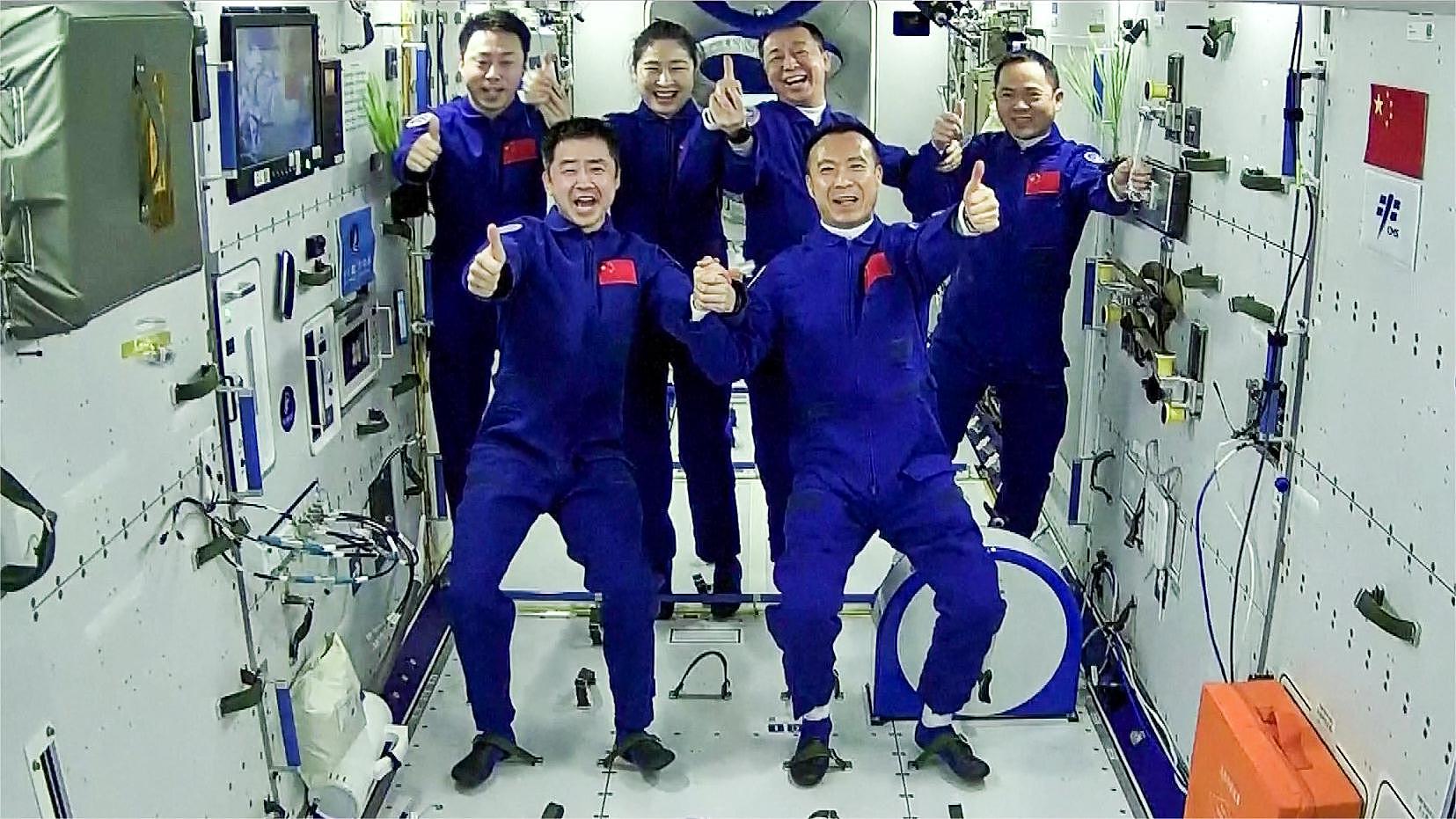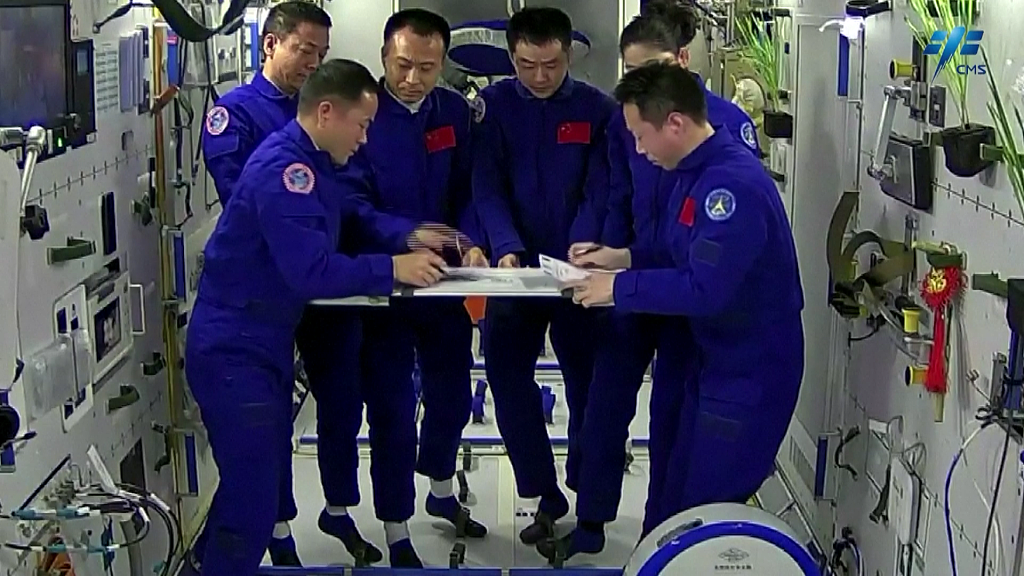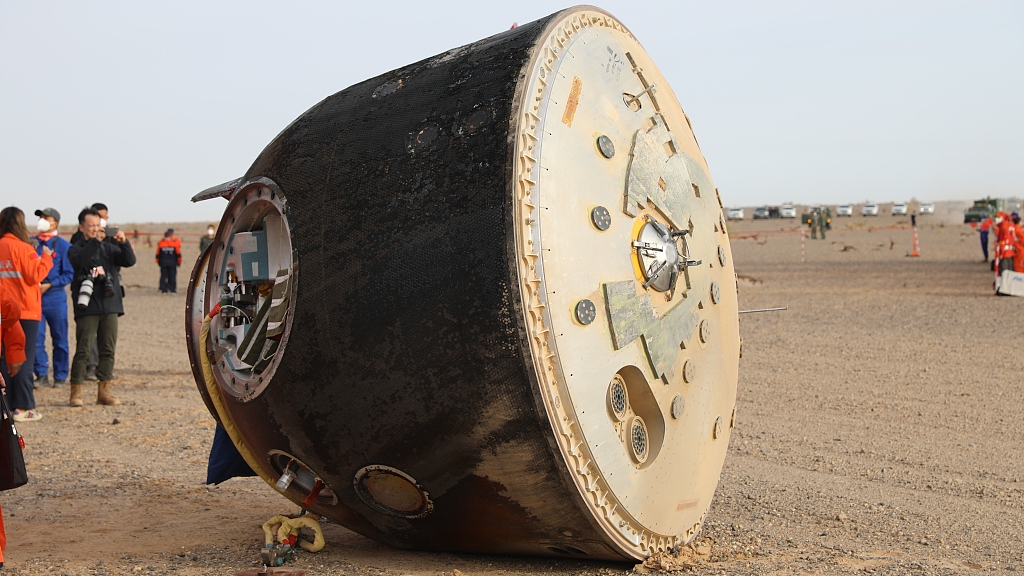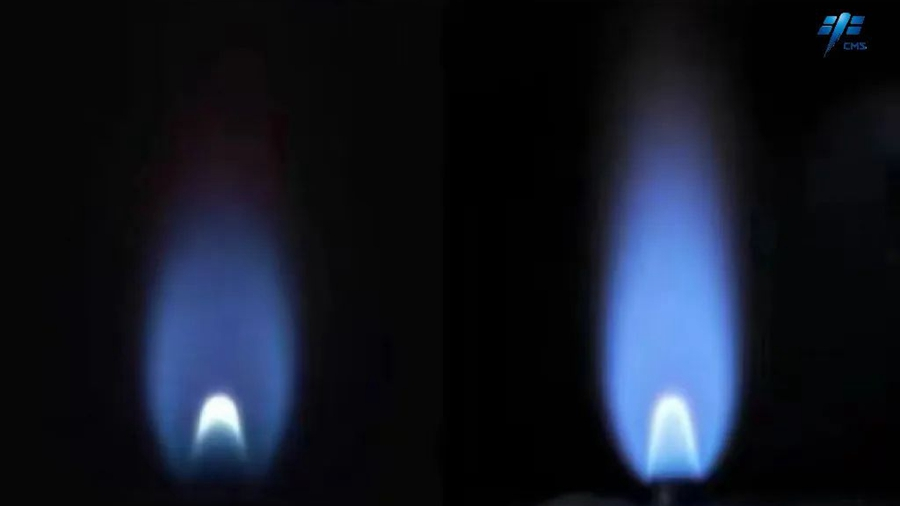The Shenzhou-15 trio has achieved multiple breakthroughs in China's space exploration as it wrapped up the last stage of the space station construction and kicked off the first stage of its application and development.
Taking off on November 29, 2022, the mission members are dubbed the "dream-fulfilling crew," as Fei Junlong had made his return to space after a 17-year wait, Deng Qingming had waited almost 25 years for his debut and Zhang Lu had been working to enter the space for 12 years.
After 186 days in orbit, the Shenzhou-15 crew returned and touched down in north China's Inner Mongolia Autonomous Region on Sunday morning.
The three taikonauts saw two handovers with the Shenzhou-14 and Shenzhou-16 crew successively.
As the eldest crew on average in Chinese space mission so far, they conducted four extravehicular activities (EVAs) – a record high.
In addition, the trio has carried out several payload exit missions, eight human factors and ergonomics tech researches, 28 aerospace medical experiments and 38 space science experiments, covering life ecology, materials science and fluid mechanics.
These missions have obtained valuable experimental data, according to the China Manned Space Agency (CMSA).
November 30, 2022
After docking with the combination of China's space station, the mission members entered and met with the Shenzhou-14 crew on board on the same day, making a historic gathering with six taikonauts at the country's space station for the first time.
With the arrival of the Shenzhou-15 spaceship, the China Space Station (CSS) expanded to its largest configuration formed of three modules and three spaceships, with a total mass of nearly 100 tonnes.

The Shenzhou-15 and Shenzhou-14 crews take a group photo with their thumbs up after a historic gathering in space, November 30, 2022. /CFP
The Shenzhou-15 and Shenzhou-14 crews take a group photo with their thumbs up after a historic gathering in space, November 30, 2022. /CFP
December 2, 2022
The Shenzhou-14 astronaut trio handed over work with the Shenzhou-15 mission members and returned to Earth two days later, kicking off the first in-orbit crew rotation in the country's space station.

China's Shenzhou-15 crew conducted the country's first-ever in-orbit rotation with the Shenzhou-14 trio on December 2, 2022. /CFP
China's Shenzhou-15 crew conducted the country's first-ever in-orbit rotation with the Shenzhou-14 trio on December 2, 2022. /CFP
February 9, 2023
The Shenzhou-15 astronauts completed their first spacewalk at 00:16 a.m. BJT on February 10 after a seven hour mission.
Fei and Zhang installed the expansion pumps outside the Mengtian lab module and a foot-stop, which is used for fixing their feet on the robotic arm.
The second EVA
The CMSA announced on March 2 that astronauts Fei and Zhang had completed their second spacewalk, with Deng working inside the space station.
March 30, 2023
The crew conducted their third spacewalk with crewmates Fei and Zhang going out for a spacewalk and completing all planned tasks.
April 15, 2023
With Fei and Zhang going outside of the space station, the trio completed their fourth EVA with several tasks completed, including the installation of the extension pumps and cross-cabin cable, making preparation for future science experiments in space.
May 11, 2023
The Tianzhou-6 cargo spacecraft docked with the CSS on May 11, and the Shenzhou-15 crew entered the cargo and transferred packages the next day.
May 30, 2023
The Shenzhou-15 trio welcomed the newly aboard Shenzhou-16 crew on Monday, and handed over control of the space station to the new comers on Friday, completing the country's second in-orbit crew rotation.

The re-entry capsule with the Shenzhou-15 crew aboard touches down at the Dongfeng landing site in north China's Inner Mongolia Autonomous Region at 6:33 a.m., June 4, 2023. /CFP
The re-entry capsule with the Shenzhou-15 crew aboard touches down at the Dongfeng landing site in north China's Inner Mongolia Autonomous Region at 6:33 a.m., June 4, 2023. /CFP
Space science experiments
The cabinet for combustion science in the Mengtian lab module performed its first ignition test on February 16, which proved it's readiness for further science projects. The experiment used methane as fuel and the two ignitions lasted about 30 seconds in total.

The comparison of methane burning in the space station (left) and it burning under the same conditions on Earth (right). /CMSA
The comparison of methane burning in the space station (left) and it burning under the same conditions on Earth (right). /CMSA
During its stay in orbit, the crew of Shenzhou-15 carried out a verification experiment and obtained three-dimensional structural images of their skin cells, using the country's self-developed two-photon microscope.
It will be a promising tool for future health monitoring of astronauts in orbit, according to its developers.

Images of Chinese astronauts' skin captured by the in-orbit two-photon microscope. /Peking University
Images of Chinese astronauts' skin captured by the in-orbit two-photon microscope. /Peking University
The crew also tested a free-piston Stirling thermoelectric converter, a key technology for spacecraft new energy supply, which can convert thermal energy into electric energy efficiently.

The Stirling thermoelectric converter. /CMSA
The Stirling thermoelectric converter. /CMSA
Besides, with the arrival of the Tianzhou-6 spacecraft, the Shenzhou-15 astronauts had carried out a six- to 15-day in-orbit experiment for cell culture, and created human stem cells in space for the first time, according to a report by China Media Group on Saturday.
Teaching and space dialogue
On April 20, students from the Shanghai Cooperation Organization member countries spoke with Chinese taikonauts on board the CSS, the crew covered issues from how zero-gravity affects muscle strength to their favorite pass-times in space.
The crew also delivered two online science classes before it returned. The first class was released on May 18 by the CMSA, interpreting the payload exit process and the expertise involved, and the second class introduced how to work out in space with microgravity resistance devices to maintain muscle strength.